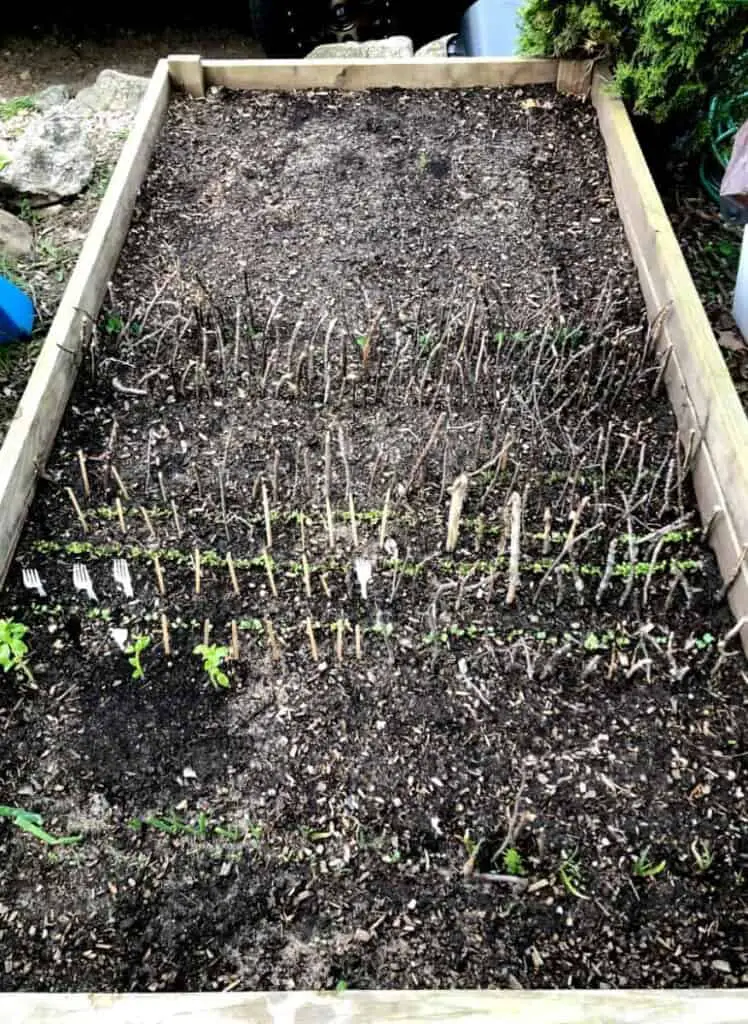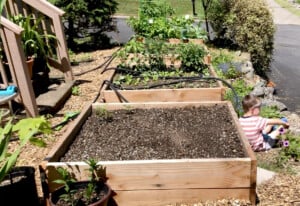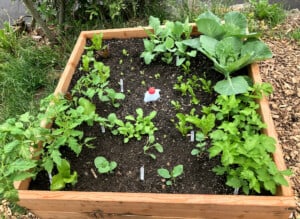I remember very well when I started my first garden. It was actually one 8×4 raised bed that my husband built for my beloved mother when she came to visit. I then continued gardening, and quickly fell in love with it, and since then expanded my growing space. In fact, we turned all our lawns into gardening space.
To start with a small garden, a 10×10 feet size should work very well for a beginner. The rule is to start small and then expand according to your abilities.

Start small then add on
The purpose of starting small is for you to find out if you actually will enjoy gardening. It’s for you to learn to master gardening on small scale, and to learn how much work and time gardening actually takes. It is a game of working and waiting.
Many have a sentimental idea about gardening while not recognizing that it involves labor and patience. If you enjoy gardening on small scale, it is then easy to expand since you would already know the basics. To help you find what are the basics of gardening I have included several links to my other articles that cover in more detail each step that will lead you to successful gardening. Feel free to take notes or save these links so you can come back to them as you start your small garden.

What is a good size garden for a beginner
A good size garden for the beginner is anywhere from 6×6 to 10×10 feet or about 36 square feet to 100 square feet whether you start an inground garden, or raised beds. or container garden.
What vegetables are good to start with
When starting a garden in spring when temperatures are still low and there might be a danger of frost, it’s good to start with a cold-tolerant crop which includes leeks, rhubarb, broccoli, kohlrabi, kale, cabbage, Brussel sprouts, arugula, radish, mustard greens, asparagus, beets, chives, carrots, cauliflower, Swiss chard, lettuce, onions, parsnips, and peas.

If you are looking for a beginner-friendly vegetable, I would recommend those that are easy to grow, don’t require much effort to protect from pests, and grow fast so you could enjoy harvesting them soon after planting and thus be encouraged to grow more and more. In my opinion, some of the easiest vegetables to grow are peas, beans, and leafy greens which include arugula, mustard greens, lettuce, and Swiss chard. Leafy greens are cut and come again crop, so you will be able to harvest and enjoy them several times during the growing season. I plant peas among my first veggies to energize me because they sprout very fast, grow fast, have lovely blooms, and taste oh-so-sweet in spring!
For beginners, I also recommend planting herbs in your garden, but perhaps would advise just purchasing established herb plants because they might take longer to grow and establish themselves.
When to start a small veggie garden
In my opinion, now is the best time to start a garden! It’s never too late or too early to start. If it’s winter and you are thinking to start a garden, you can start by planning it. I would suggest you start a pantry stocking garden. A pantry stocking garden in which you focus on growing vegetables your family not only likes to eat but will allow you to store harvest for months ahead. To learn in detail about what exactly a pantry stocking garden is, visit my article by clicking What is a pantry stocking garden. I would like to inspire you to grow a pantry garden to fill up your freezer, cupboards, and pantry shelves with food. To learn about the purpose of a pantry stocking garden in detail, you are welcome to visit my article What is the purpose of a pantry staple garden.
Planning the garden is the first and one of the most important steps to do when wishing for a garden, even if it’s a small one. In my article How to start a vegetable garden, I recommend starting small, advising you on how to plan your growing space, and that there are 3 most preferred types of gardening by us home gardeners. I also talk about the layout, soil preparation, and other steps that will help you to plan for success.
If you want to start a garden in spring and pick the best month to grow your veggies, then March and April are the first two spring months that we gardeners are most excited about. It’s the time we check our soil if thawed, moist but not too soft to work it. We prepare seeds, and seedlings, and start planting. If you would like to learn in detail about why March and April are the prime months to start a garden visit What is the best month to start my vegetable garden where I talk about how to know the right timing to plant things out, what vegetables are best to start with in those months, and how to prepare for those surprise frosts that can still strike.
Choose the right spot for your garden
Once you know what size of garden you want to build, it’s time to choose the right location. The location can make or break your veggie patch. Choose a location, if possible, on a level lot, close to the water source and your home which will make it easier for you to maintain it. Since most vegetables require 8 hours of sun and best placement would be on the south side. However, if the south side is not an option for you choose a location that gets the most sunshine. If you have trees, fences, a house, or anything that would cast a shadow into your garden go out in the morning, noon, and late afternoon and check where is the sunshine at those times.
Once our location is confirmed, it’s time to finally set your garden up. For those who feel like you are ready to start constructing your garden, I have provided a guide on How to start a vegetable garden, which will provide you with details on each step to take to have things done.
What vegetables are good for small spaces?
How close can you plant veggies together?

